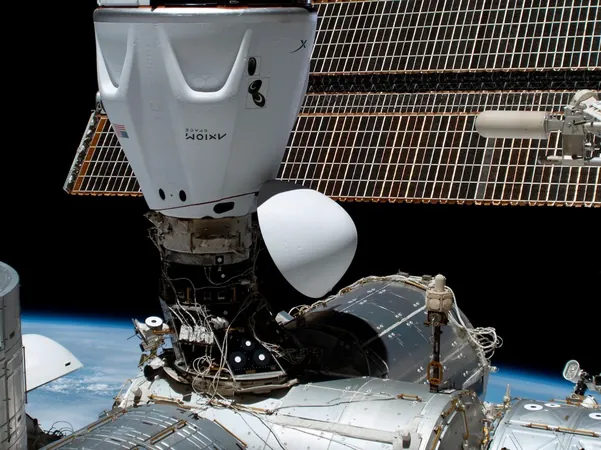
Private Astronaut Missions to ISS: A New Horizon for Commercial Space Flight
2024-10-02
Author: Ming
In a bold push to expand commercial space initiatives, numerous companies are urging NASA to ramp up opportunities for private astronaut missions (PAMs) to the International Space Station (ISS). This move not only aims to enhance their operational experience but also seeks to spark greater interest among potential customers in the burgeoning field of private space travel.
Since NASA's 2019 policy shift aimed at promoting the commercialization of the ISS, the agency has indicated it would permit up to two PAMs annually. Despite this promising outlook, there has been a lag in execution, with only three PAMs completed thus far, all conducted by Axiom Space. Their missions—Ax-1 in April 2022, Ax-2 in May 2023, and Ax-3 slated for January 2024—represent a novel frontier in human space exploration.
The upcoming Ax-4 mission is projected for Spring 2025, after a delay pushed it back from an earlier fall 2024 timeline. However, the prospect of future PAMs remains uncertain, as NASA has yet to issue new requests for proposals (RFPs), leading to concerns about the pace of future missions.
Jared Stout, Axiom's Vice President of Government and External Relations, stressed the importance of leveraging the currently operational ISS. During a recent panel at the Space Capitol Forum 2024, he remarked, “We need to take full advantage of this asset in low Earth orbit. Continuing private astronaut missions is an essential part of that strategy.”
Axiom has thus far enjoyed limited competition for their PAMs, but this landscape is set to shift. Vast Space, which plans to launch its Haven-1 commercial space station by late 2025, is aiming to compete for future PAM opportunities. Richard Leshner, Vast’s Vice President of Government Affairs, expressed optimism, stating, “If there is an RFP out on the street for [PAMs], we would certainly compete. We are all hopeful that NASA continues to move forward.”
Budget constraints within NASA's overall program, which supports the development of commercial space stations, have raised concerns about the ability to accommodate more missions. Leshner emphasized the importance of PAMs in the shift from ISS to commercial space stations, asserting, “It would be a shame if there was some sort of pullback from that purpose. If anything, there should be more of them.”
The interest in PAMs is not limited to private entities. The crew compositions of Axiom's missions reflect a growing willingness among nations to send their astronauts into space. While Ax-1 featured private individuals, subsequent missions have seen increasing participation from government astronauts. Stout pointed out, "Countries all over the world that haven’t had the opportunity want to send their national astronauts to space."
This emerging trend hints at a broader renaissance of human spaceflight that could ignite interest in various national industries and populations. As Stout noted, there is a significant potential for multiple PAMs to be conducted by various countries every year—transforming the landscape of space exploration and making it more accessible on a global scale.
The space race is far from over, and private astronaut missions could be the key to unlocking new heights in international cooperation and commercial ventures in low Earth orbit. Stay tuned as we witness the dawn of a new era in human space travel!




 Brasil (PT)
Brasil (PT)
 Canada (EN)
Canada (EN)
 Chile (ES)
Chile (ES)
 España (ES)
España (ES)
 France (FR)
France (FR)
 Hong Kong (EN)
Hong Kong (EN)
 Italia (IT)
Italia (IT)
 日本 (JA)
日本 (JA)
 Magyarország (HU)
Magyarország (HU)
 Norge (NO)
Norge (NO)
 Polska (PL)
Polska (PL)
 Schweiz (DE)
Schweiz (DE)
 Singapore (EN)
Singapore (EN)
 Sverige (SV)
Sverige (SV)
 Suomi (FI)
Suomi (FI)
 Türkiye (TR)
Türkiye (TR)